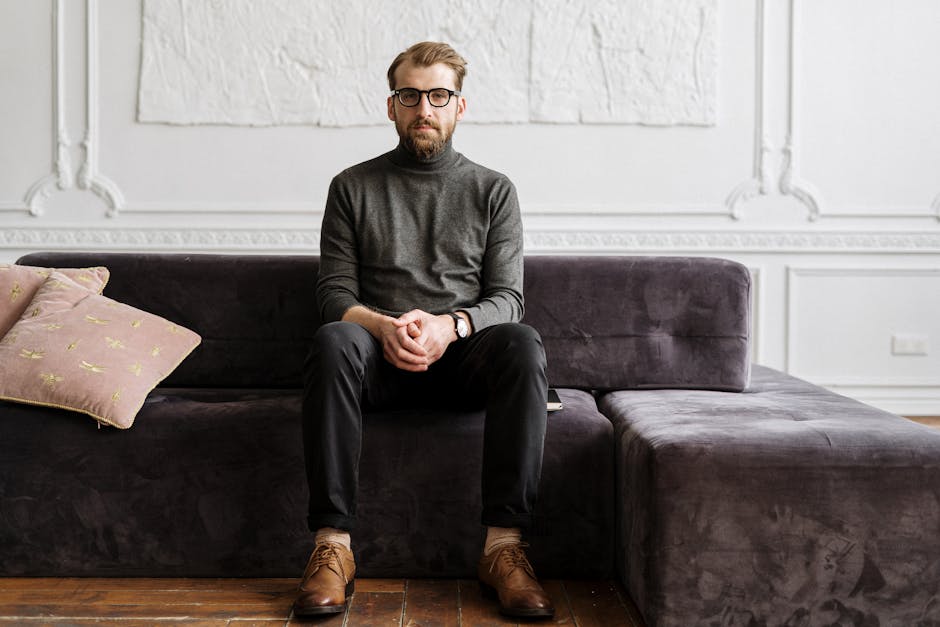Color isn’t just about style—it drives how a space feels and functions. The right shade can make a room feel larger, brighter, calmer, or more energetic. It’s the silent backdrop setting your mood before you even realize it.
But there’s a clear line between throwing colors around and using them with purpose. Random color choices create distraction, not interest. Thoughtful palettes, on the other hand, guide the eye, define space, and create cohesion without being loud.
A unified palette does the heavy lifting in tying a home or space together. It helps each room feel like part of a bigger story. Whether it’s neutrals with soft accents or bold contrasts that echo throughout, consistency adds polish. The vibe feels intentional. And when the space makes sense visually, function tends to follow.
Start with one foundational color. This isn’t about chasing trends. It’s about choosing a hue that actually fits your life. Look around—what colors dominate your furniture, clothing, or favorite objects? If your space already has strong tones, echo or contrast them. Neutrals like deep gray, taupe, or earthy greens are solid picks if you’re unsure. The key is to pick something that won’t feel tired in six months.
Next, get familiar with undertones. Every color leans either cool or warm, and this changes everything. Cool undertones tend to have hints of blue, green, or violet. Warm tones carry notes of red, yellow, or orange. Want a calm, modern feel? Stick with cooler shades. Want warmth and cozy energy? Go warmer.
Finally, swatches are your best friend. Don’t guess. Grab fabric scraps, paint chips, or use artwork you love to guide you. Lay them out next to each other. See what sticks. The best color schemes grow out of what’s already working in your space—not from an Instagram post you saved two weeks ago.
Color can elevate your vlog instantly—but only if you use it with purpose. Whether it’s your set design, graphics package, or fashion choices, the 60-30-10 rule keeps visual chaos in check: 60% of your look should be one dominant color, 30% a secondary tone, and 10% a bold accent. This ratio keeps things balanced without looking bland.
To ground bolder shades—think neons, primaries, or rich earth tones—neutrals are your best ally. Grays, whites, camels, and muted tones calm the frame down and make the standout colors pop without overwhelming the viewer.
Mixing multiple colors? Stick with tones that sit well together. Use color wheels or palette generators to build harmony. If you’re not sure, test your setup on a smaller scale before going all in. The goal isn’t to be loud—it’s to be intentional. That’s what keeps people watching.
Creating visual flow between rooms is less about matching everything and more about choosing details that talk to each other. Think of it like a conversation from one space to the next. You don’t need uniformity. You need continuity.
Start by picking a base palette that runs consistently through the home. That doesn’t mean every wall has to be the same shade. Maybe it’s a soft gray in one room and a deeper charcoal in another. These tonal shifts keep it interesting without feeling disconnected.
Use accent colors strategically. Repeating a color—say, a muted olive or a clay red—in different rooms gives the whole place a rhythm. This is where things like pillows, wall art, or even baseboards can play a big role.
And don’t be afraid to change the mood. A bolder room can flow into something calmer if you carry over one or two color cues. Think kitchen with navy cabinets bleeding into a dining room with navy dining chairs. The trick is to echo without copying.
Flow isn’t about being matchy. It’s about subtle alignment that makes the whole space feel intentional.
Textures do more than make a scene feel tangible—they shape how we perceive color. A matte surface softens light, muting tones and making hues feel grounded and flat. Gloss reflects more light, brightening colors and often skewing how saturated they appear. Fabric can add warmth or movement to a palette, while natural textures like wood introduce organic variation that pulls a scheme together.
Using texture intentionally helps tie a vlog’s visual identity into a cohesive whole. It’s not just about contrast—it’s about rhythm. Layering a glossy ceramic next to rough linen, for example, adds interest without turning the frame into chaos. The trick is balance. Pick one or two accent textures to introduce contrast, while letting a dominant material set the tone.
When combining materials, keep the color family tight. Soft neutrals on rough wood will behave differently than those on polished tile, but they can still live together if the palette stays controlled. Visual harmony isn’t about being matchy. It’s about using texture to give your content atmosphere without overwhelming the eye.
Mastering Color: Tools and Resources for Flawless Finishes
Color can transform a space—but choosing the right palette takes more than good taste. Today’s tools make it easier than ever to visualize combinations and avoid costly mistakes.
Use Digital Apps to Test Color Palettes
Before you commit to paint, test it digitally. Many interior designers and DIYers rely on mobile and desktop tools that simulate how a color will look in a given environment.
Popular choices include:
- Adobe Color: Build your own palette using the color wheel or explore thousands of trending schemes.
- Canva Color Palette Generator: Upload an image to extract its palette and match tones instantly.
- Behr and Sherwin-Williams Apps: Visualize paint choices on sample rooms or upload your own photo.
These apps help eliminate guesswork, especially when designing around existing furniture or materials.
Understand the Power of Color Wheels and Ready-Made Schemes
Color wheels aren’t just for art class. They’re essential for understanding harmony, contrast, and balance.
- Use complementary colors to create high-impact themes.
- Analogous and monochromatic schemes make for more calming, cohesive rooms.
- Triadic and split-complementary combinations are great for bolder, more dynamic results.
Working from a pre-made scheme can be a great shortcut when inspiration is lacking. Many of the above-mentioned apps also include curated palettes designed for interior use.
Where Pros Go for Samples and Finishes
Seeing color in context matters. That’s why interior professionals rely on specific sources for tangible samples.
- Local paint stores often provide free swatches and sample-size containers.
- Design centers and showrooms carry high-end finishes, wallpapers, and textiles.
- Brands like Farrow & Ball or Benjamin Moore offer order-by-mail samples and design tools tailored to residential projects.
Bring those samples into the actual space and test them under natural and artificial lighting. Real-world testing will always reveal what digital previews can’t.
Knowing how to access and use the right tools—from digital previews to professional-grade samples—can give any project a polished, intentional look.
Lighting can make or break your paint decision. Natural sunlight reveals undertones you didn’t know existed. Artificial light, especially from LEDs or warm bulbs, can skew what the color looks like at night. That’s why the paint chip you loved in the store might feel completely wrong once it’s on your wall.
The fix is simple, but it takes patience. Use sample boards or paint swatches and move them around the room throughout the day. Check them in morning light, cloudy afternoons, and under your evening lamp setup. A color that reads like warm gray at noon might go beige or lavender in dim light.
Too many people rush this step. Then they repaint. And repaint again. Slowing down at the start saves money, time, and regrets. Let the light show you what’s real before you commit.
When it comes to color in minimalist vlogging spaces, less does more. Instead of flooding the frame with hues, smart creators are sticking to tight palettes. Think soft whites, neutral greys, and earthy tones that let your presence—not your walls—do the talking. It’s not about being bland. It’s about clarity.
In 2024, minimalist color isn’t just aesthetic, it’s strategic. Clean, consistent backdrops focus attention exactly where you want it. They also make editing easier and thumbnails pop without being loud. Want inspiration on how to pull it off without your room looking like a blank sheet of paper? This collection of ideas keeps it simple and sharp: Inspiring Minimalist Design Ideas for Every Room.
Color in your home isn’t just decoration. It’s function and feeling rolled into one. The color palette you choose should help each room do its job. Warm tones where people gather. Cool ones where they unwind. And beyond function, color speaks to your mindset. What you want your space to feel like when you walk in.
Don’t overload the palette. Pick a main vision and let it guide the rest—but don’t feel locked in. A burst of personality in a throw pillow or bold art piece keeps the space honest.
And here’s the thing: consistency doesn’t mean you stick with beige everywhere. It means the colors talk to each other. Rooms feel like they belong to the same story. When you get that right, it doesn’t feel staged. It feels like home.


 Vicky Skinneriez brings sharp research and fresh perspectives to the platform. As a key contributor at drhextreriorly, she covers software advancements, modern app ecosystems, and the evolving digital landscape. Vicky’s writing blends accuracy with creativity, helping readers understand the real impact of today’s most important tech developments.
Vicky Skinneriez brings sharp research and fresh perspectives to the platform. As a key contributor at drhextreriorly, she covers software advancements, modern app ecosystems, and the evolving digital landscape. Vicky’s writing blends accuracy with creativity, helping readers understand the real impact of today’s most important tech developments.

